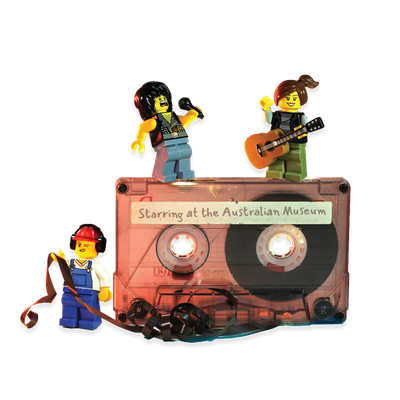Your search returned 10 results
By Page Type
By Tag
- All
- fish (966)
- blog (698)
- fishes of sydney harbour (400)
- First Nations (293)
- Blog (236)
- AMRI (169)
- archives (165)
- Aboriginal and Torres Strait Islander (135)
- Eureka Prizes (131)
- insect (126)
- Ichthyology (125)
- geoscience (109)
- minerals (102)
- climate change (98)
- podcast (94)
- Fish (91)
- Anthropology (89)
- International collections (80)
- Minerals Gallery (78)
- wildlife of sydney (78)
- Labridae (77)
- frog (73)
- gemstone (70)
- history (63)
- photography (63)
- staff (61)
- Mollusca (60)
- gem (59)
- Birds (58)
- education (57)
- Gems (56)
- Indonesia (56)
- AMplify (54)
- shark (54)
- people (53)
- exhibition (51)
- earth sciences (50)
- past exhibitions (50)
- Gobiidae (48)
- Pomacentridae (45)
- sustainability (45)
- Serranidae (44)
- science (43)
- lifelong learning (42)
- Earth and Environmental Science (41)
- Syngnathidae (41)
- Ancient Egypt (40)
- Bali (40)
- bird (40)
- dangerous australians (40)
-
Bull Apis - E39829
https://australian.museum/learn/cultures/international-collection/ancient-egyptian/bull-apis-e39829/The life and death of Egyptian god.
-
How were ancient Egyptians mummified?
https://australian.museum/learn/cultures/international-collection/ancient-egyptian/how-were-ancient-egyptians-mummified/The Egyptians had a long tradition of mummifying their wealthy dead.
-
Bramble Cay Melomys, Melomys rubicola
https://australian.museum/learn/australia-over-time/extinct-animals/melomys-rubicola/The Bramble Cay Melomys, or Bramble Cay mosaic-tailed rat was officially declared extinct in 2019. It is considered the first mammal to become extinct due to climate change.
-
Homo heidelbergensis
https://australian.museum/learn/science/human-evolution/homo-heidelbergensis/These humans evolved in Africa but by 500,000 years ago some populations were in Europe. They lived and worked in co-operative groups, hunted large animals and made a variety of tools including stone hand axes and wooden spears set with stone spearheads.
-
3D Model of Chinese Statue
https://australian.museum/learn/cultures/international-collection/chinese/3d-chinese-statue/A gilded Chinese statue in 3D
-
Bump-head Sunfish, Mola alexandrini (Ranzani 1839)
https://australian.museum/learn/animals/fishes/bump-head-sunfish-mola-alexandrini/The Bump-head Sunfish is a huge round-bodied fish that is sometimes seen 'basking' on the water surface in southern Australian waters.
-
Thylacine
https://australian.museum/learn/australia-over-time/extinct-animals/the-thylacine/What is a thylacine? Why did it become extinct?
-
Estuarine Stonefish, Synanceia horrida (Linnaeus, 1766)
https://australian.museum/learn/animals/fishes/estuarine-stonefish-synanceia-horrida/Two species of stonefishes are recorded from Australia, the Estuarine Stonefish and the Reef Stonefish.
-
Soft Leftvent Angler, Haplophryne mollis (Brauer, 1902)
https://australian.museum/learn/animals/fishes/soft-leafvent-angler-haplophryne-mollis-brauer-1902/The Soft Leftvent Angler is named for its asymmetrically placed vent. The species is highly sexually dimorphic. Mature males parasitise the much larger females.
-
Hoodwinker Sunfish, Mola tecta Nyegaard et al 2017
https://australian.museum/learn/animals/fishes/hoodwinker-sunfish-mola-tecta/The Hoodwinker Sunfish, Mola tecta, is a new species of sunfish that has been 'hiding in plain sight' for over 125 years.
-
Find out more
Tails from the Coasts
Special exhibition
On now![]()
-
Find out more
Burra
Permanent kids learning space
10am - 4.30pm![]()
-
Discover more
RELICS
Special Exhibition
Opens 16 August 2025![]()
-
Discover more
Minerals
Permanent exhibition
Open daily![]()





